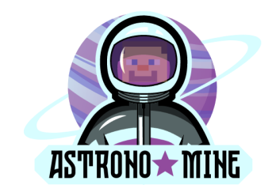What does space exploration look like in K-12 education?
''Shift our efforts in space from low to high gear,” was a sentiment given weight in President John F. Kennedy’s Moon Speech at Rice Stadium in Houston, Texas on September 12, 1962. Over a half of a century later, on April 16, 2018, the White House gave NASA a new direction to refocus exploration efforts on the moon with international and commercial partners on three core domains: low Earth orbit; lunar orbit and surface; and Mars and other deep space objectives.
As space exploration is currently being refocused, it is also a good time for education to refocus its approach to space exploration.Space exploration could be linked to almost every subject in K-12 education. For example, Public Policy and Law in relation to asteroid mining, moon and Mars colonies (who owns/controls what), politics of satellites (sensing, warfare, etc.), and space debris.
Below, I share a few recent announcements from the last week or two that demonstrate just how many new programs, products and projects are being created that are increasing access to space exploration as an academic subject. High school students at Montour School District are offered three unique experiences in astronomy – a course focused on stellar astronomy, a course focused on planetary astronomy, and a course titled Welcome to the Universe, new this year.
On April 18, at the FIRST Championship in Houston, LEGO Education and FIRST unveiled two new, exclusive space sets, along with a couple of new challenges. Students will not only use the new space-themed sets to compete in skills-based challenges, but students will be Getting Ready for the Jobs of the Future by facing complexity and working together as teams.
This is a part of the original article posted in Getting Smart on 28 April 2018.
Author: Justin Aglio
Link: https://www.gettingsmart.com/2018/04/28/space-exploration-in-k-12-education/
